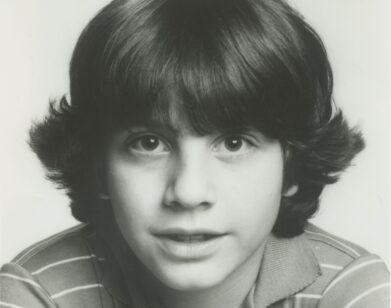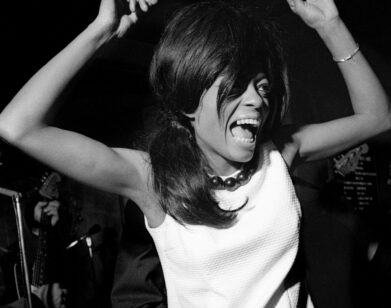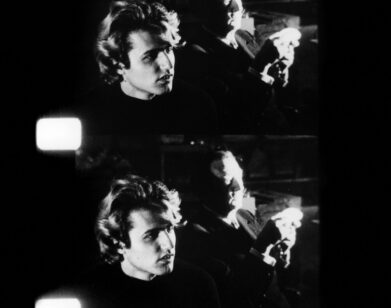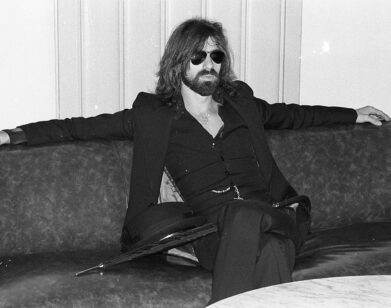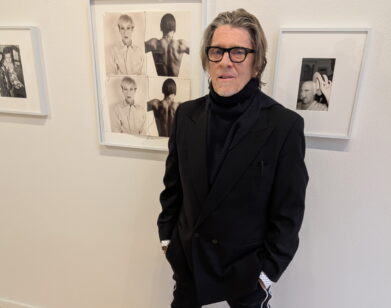EXCERPT
No One Saw David Bowie Like the Photographer Denis O’Regan
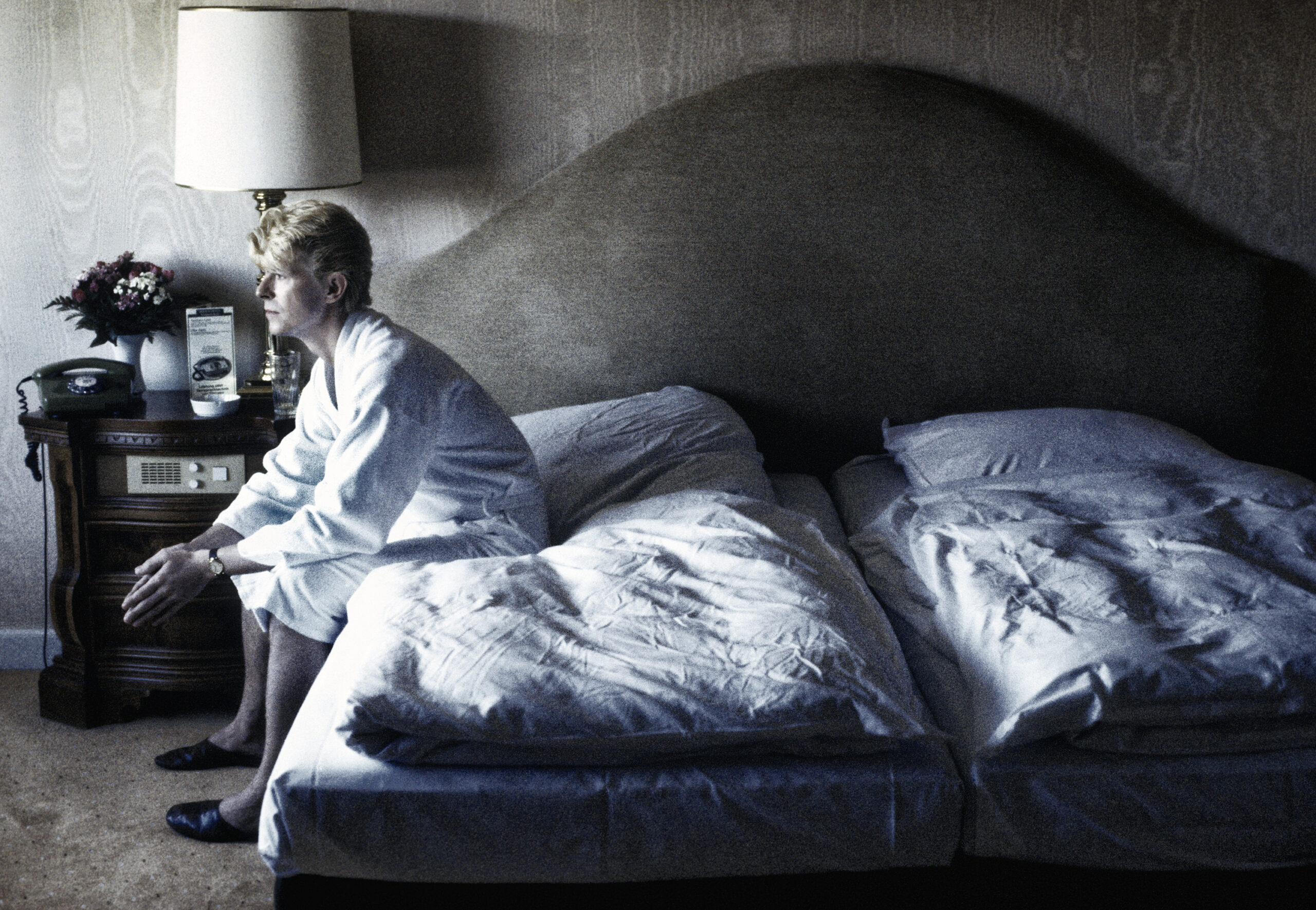
All photographs by Denis O’Regan.
Nobody captured David Bowie quite like photographer Denis O’Regan. Their first encounter, outside Olympic Studios in 1974, sparked a creative partnership that would span decades, continents, and over 200 performances. Now, in David Bowie by Denis O’Regan, published last week by ACC Art Books, O’Regan opens his full archive for the first time. The result is a rare, career-spanning portrait of the chameleonic rock star, featuring never-before-seen images and candid recollections from a man who knew Bowie as both icon and friend. It’s also a record of proximity: of what it means to move through life alongside an artist who refused to repeat himself. In the excerpt below, O’Regan recalls the day he first stood on Church Road, his second-hand Zenit camera in hand, kicking off a fateful collaboration and a lifelong bond.—OLAMIDE OYENUSI
———
One Saturday in 1974, two girls trotted into the newspaper shop where I worked, giggling, in search of pens and paper. It transpired that David Bowie was recording across the road at Olympic Studios, the man I’d discovered a mile away at the Hammersmith Odeon just a year before. I hurried home to fetch my first camera—a second-hand Zenit acquired from a friend for £5—and raced back to position myself near the steps of the building. David’s Lincoln Town Car silently glided to the curb, a moment that came so swiftly and quietly I almost missed it. Determined not to let the opportunity slip away, I returned the following day, this time better prepared. David remembered me and shared a few prophetic words: “You should work for NME!” I could not have foreseen that, a decade later, the words “Where’s Denis?” would be uttered by David Bowie so often that it became a running joke and was voted “catchphrase of the year” in Sydney during the closing party of the Glass Spider Tour.
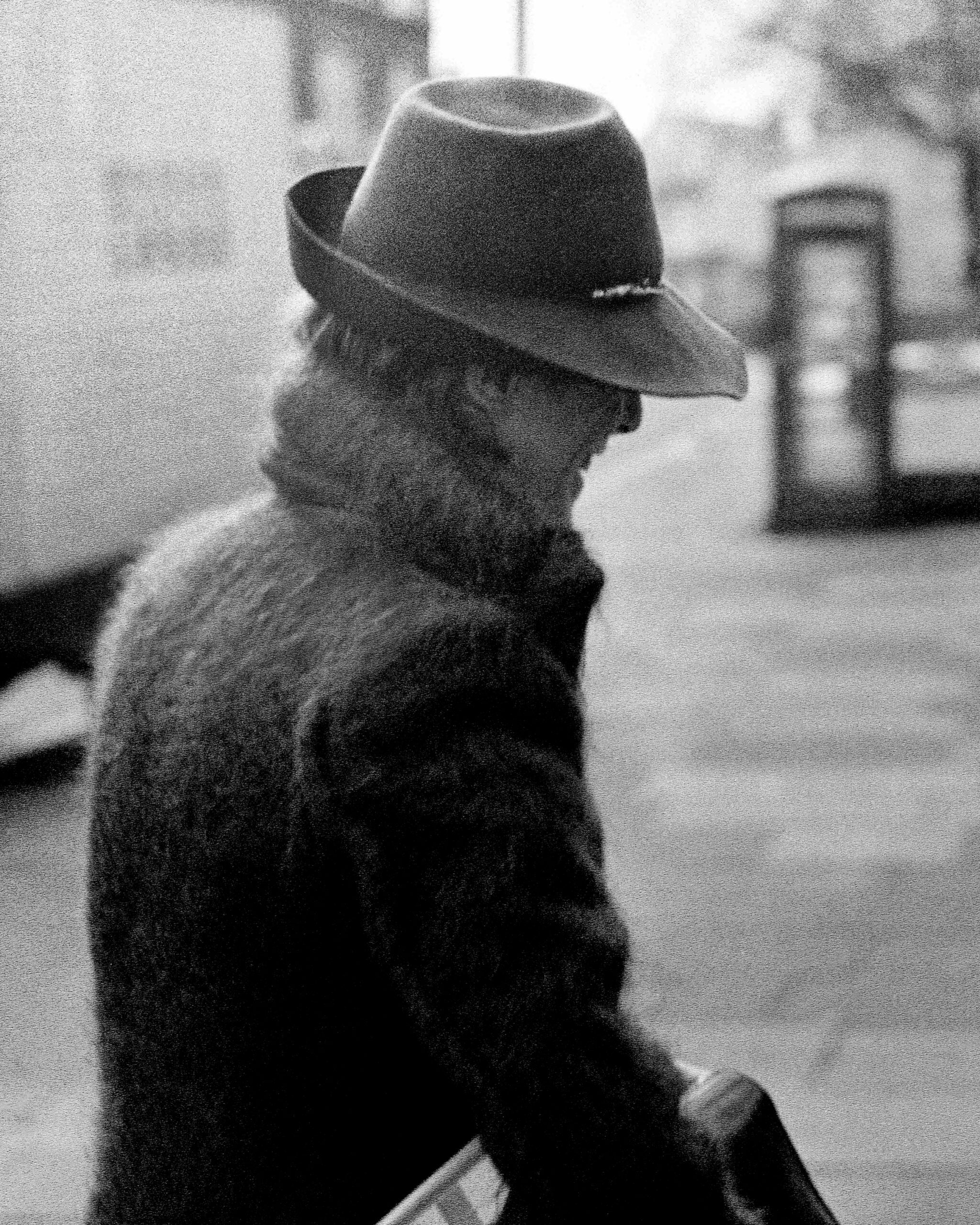
1974 Bowie Olympic 02, One of the first pictures O’Regan took of David Bowie offstage, outside the Olympic Studios in Barnes, West London.
Having been inspired by Jimmy Page in 1972, the Ziggy Stardust show at the Hammersmith Odeon in London in 1973 was transformative, expanding my horizons beyond anything I’d previously experienced. The scales fell from my teenage eyes as red velvet curtains opened on the theatre of my imagination. Bowie’s cosmic ballet—a fusion of music and mime with elements of Japanese kabuki—left an indelible mark. A switch flipped within me: “This is the future,” “This is your future.” Mick Ronson in glittering breeches cut a dashing rock ’n’ roll figure in the Spiders from Mars, his golden Les Paul glinting in the spotlight as it screamed through Moonage Daydream. The hikinuki technique, which translates as “quick change,” was executed at the song’s opening as unseen hands tore away David’s costume, revealing a mini silk kimono, styled by Kansai Yamamoto. Its creator crafted several costumes for David during his Aladdin Sane period, thrusting Bowie’s ambisexual androgynous alien into the mainstream.
Aladdin Sane was the first Seventies album to take its place in my vinyl collection, secured in a dance competition at a basement club opposite Richmond station, where I strolled onto the dance floor with a girlfriend, top hat in hand, and moved like Jagger. The album ushered in an era of ever more extravagant cover art and groundbreaking musical landscapes, David crafting such lines as “Pour me out another phone” in “Drive-In Saturday” (1973). My frolicsome moment unfolded in the very building where The Rolling Stones held their residency a decade earlier, to which The Beatles made a pilgrimage of intrigue in 1963.
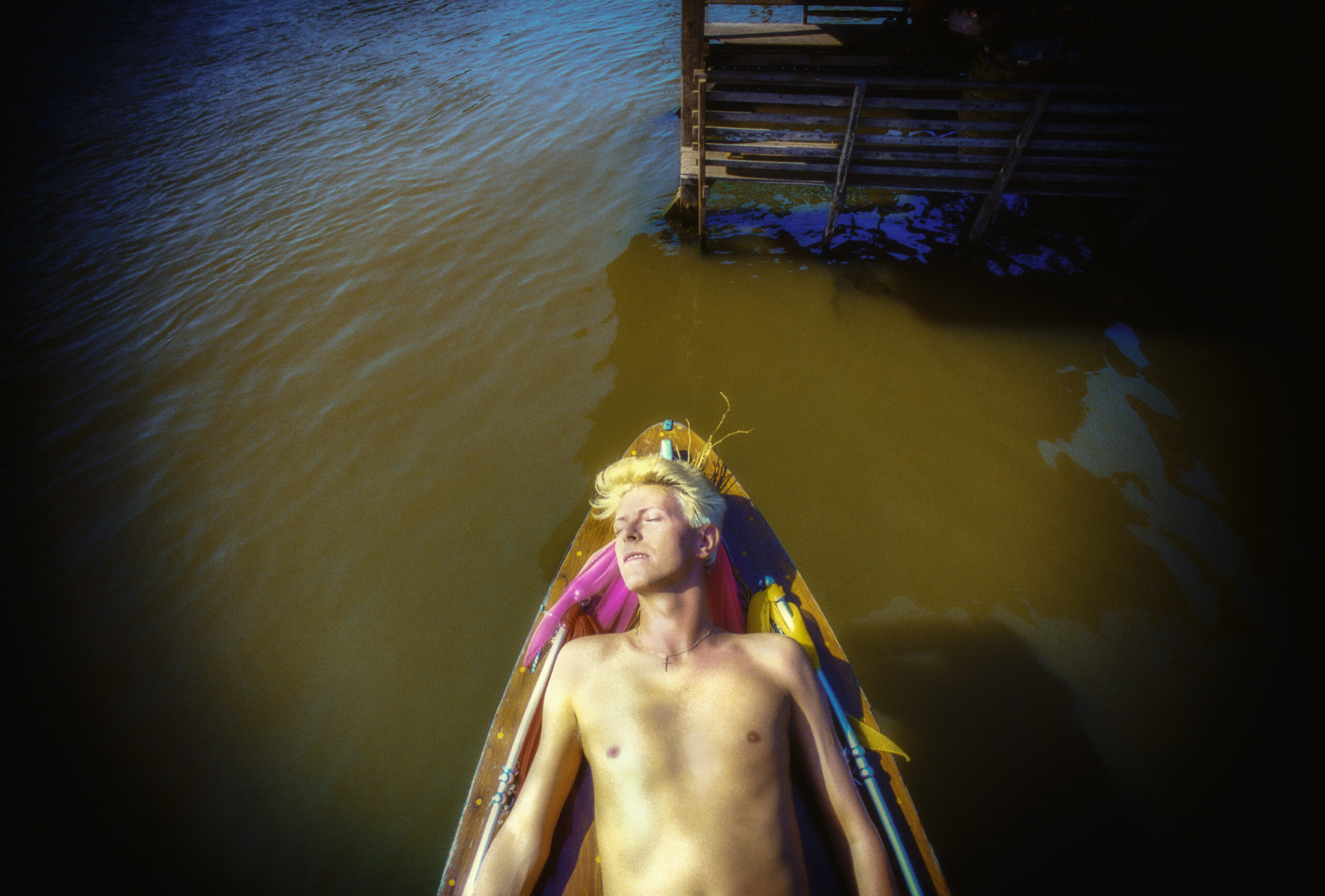
Time out on a boat in Bangkok during the 1983 Serious Moonlight tour.
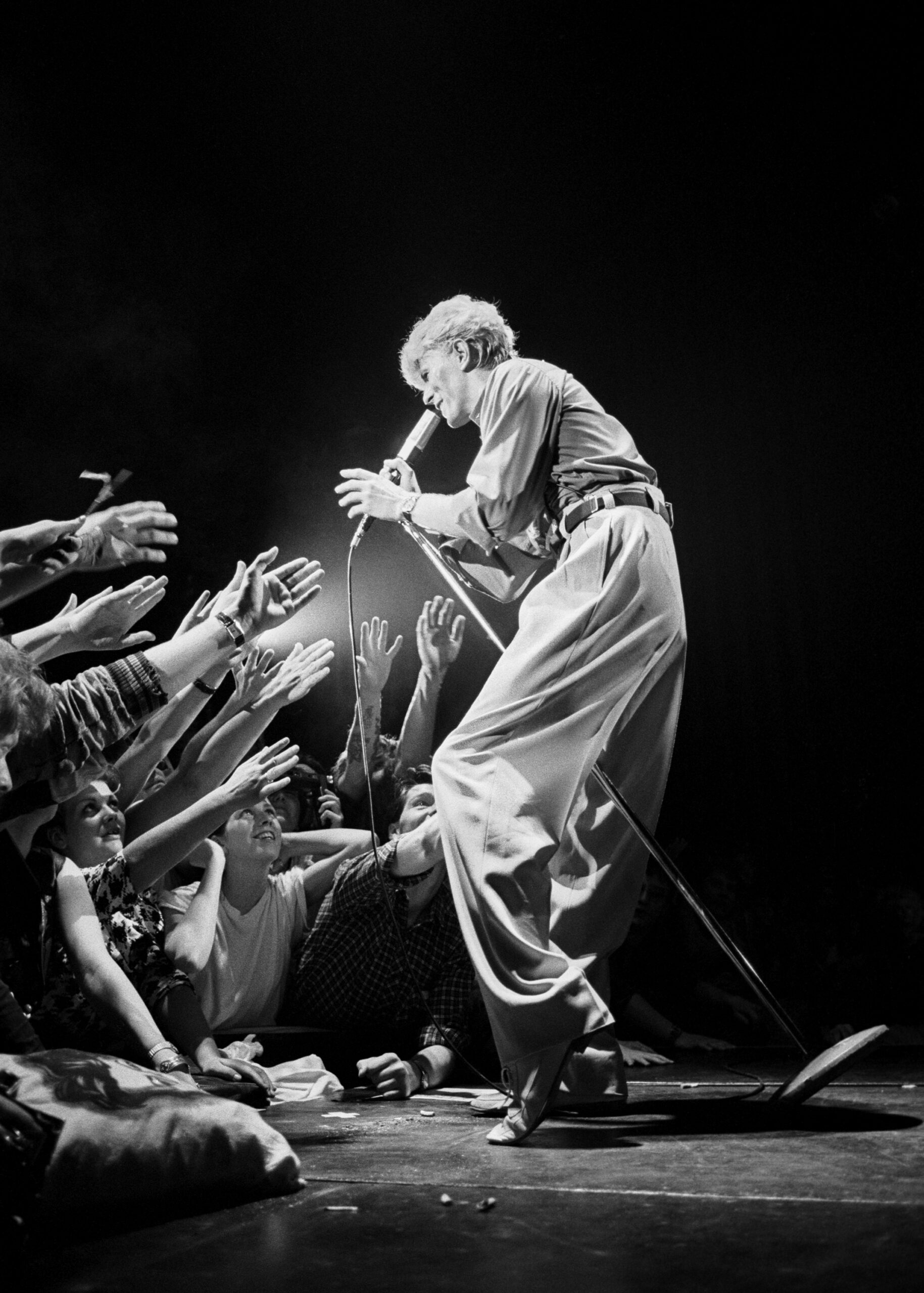
1983 Bowie Hammersmith, Bowie performing in June 1983 at the Hammersmith Odeon in London, a charity show for the Brixton Neighbourhood Community Association.
In May 1974, David Bowie unveiled his eighth studio album, Diamond Dogs. Hearing it conveys me back to that first fleeting encounter during recording sessions in Barnes. Two weeks later, I departed on my Grand Tour of Europe—a decade touring with many of the world’s greatest British musical icons, including Queen and The Rolling Stones. Two of those years were spent on tour with David Bowie. In 1978, I did in fact work for iconic music paper New Musical Express (NME)—as suggested by David—shooting Blondie, the Ramones, The Clash, Iggy Pop and—at my request—David Bowie at Newcastle City Hall, my first professional photographs of The Thin White Duke. Duran Duran’s John Taylor would admire those pictures as he read his copy of NME on the bus journey to school. David Bowie’s show at Madison Square Garden in New York City in 1983 was an event. Attendees backstage and at the Café Seiyoken after-party included Andy Warhol, Keith Richards, Yoko Ono and Tina Turner. Mick Jagger was sensitive about being photographed on his 40th birthday, but posed for a jolly picture with David, as featured in the respected publication Newsweek a few days later.
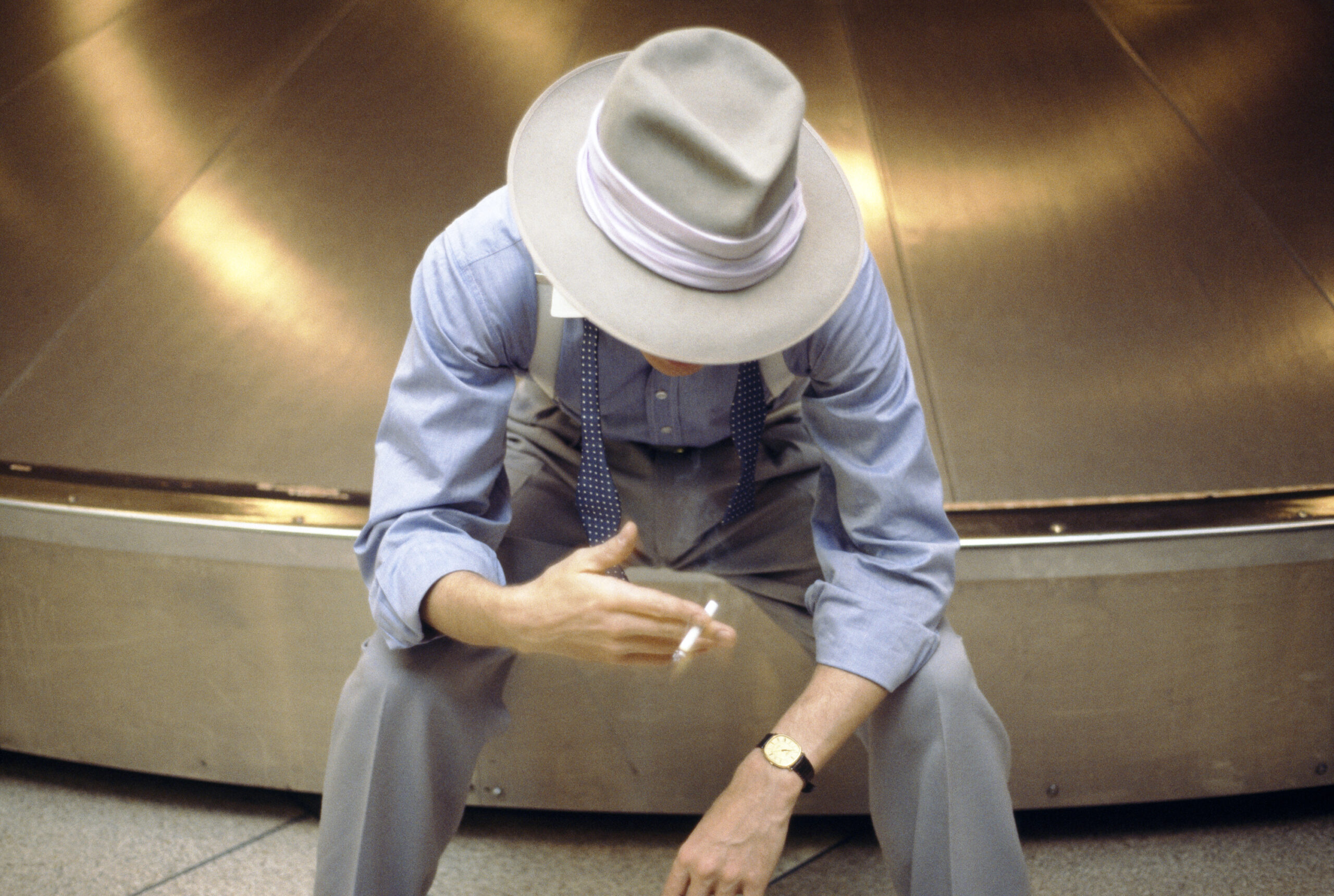
1983 Bowie airport, Chilling at the airport while on his 1983 Serious Moonlight tour.
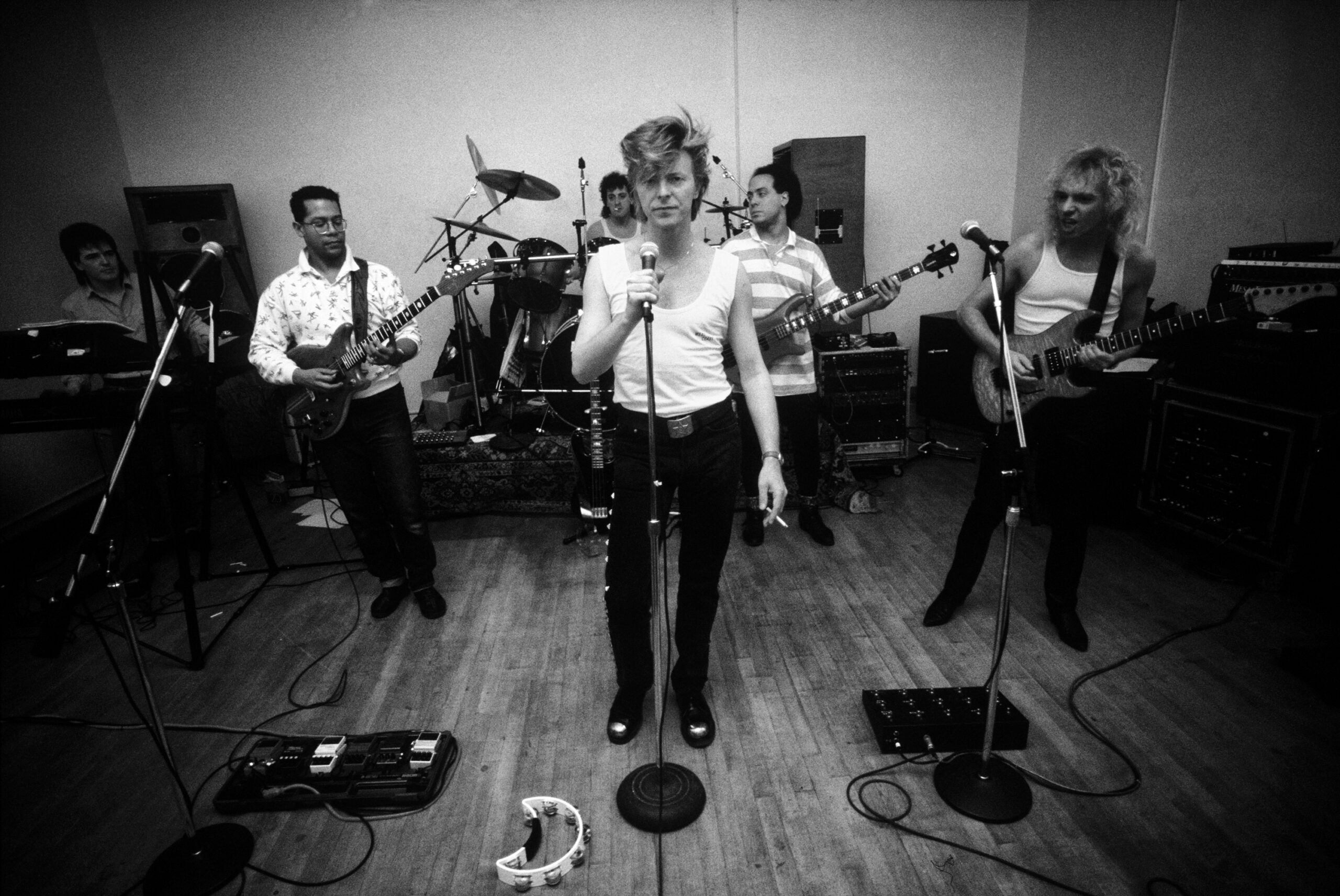
1987 Bowie rehearsal NYC, David Bowie, New York City rehearsals, 1987.
David played two nights at “The Garden” but Ron Delsener—the first New York promoter to book David in 1972—believed he could have broken Elton John’s record-breaking seven-night residency. During the Serious Moonlight Tour, I photographed David backstage at the Forum in Los Angeles with Michael Jackson on their first-ever encounter. At the Auteuil Hippodrome in Paris, an audience member threw glittering red shoes on stage, which David integrated into “Let’s Dance,” sashaying with a phantom partner, and at Milton Keynes Bowl in England, he wove a parasol into “China Girl.” David headlined only one outdoor show prior to 1983, so European promoters were reluctant to book him into stadiums. But when 250,000 applications were received for 44,000 tickets at one indoor arena in the UK, promoters worldwide fell over themselves to book larger venues.
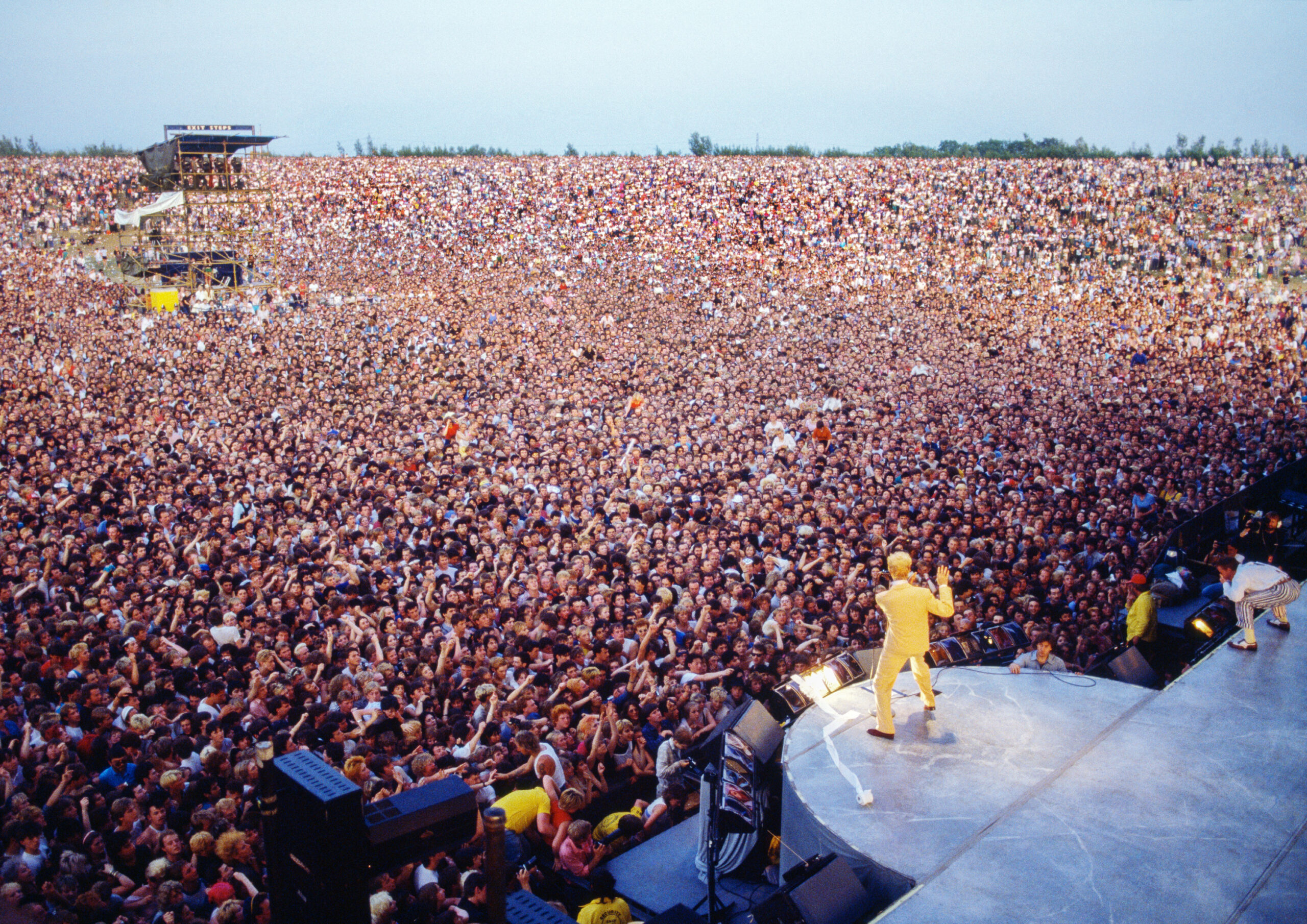
Bowie performing for 175,000 fans over three days at the Milton Keynes Bowl in 1983, as part of the Serious Moonlight tour.
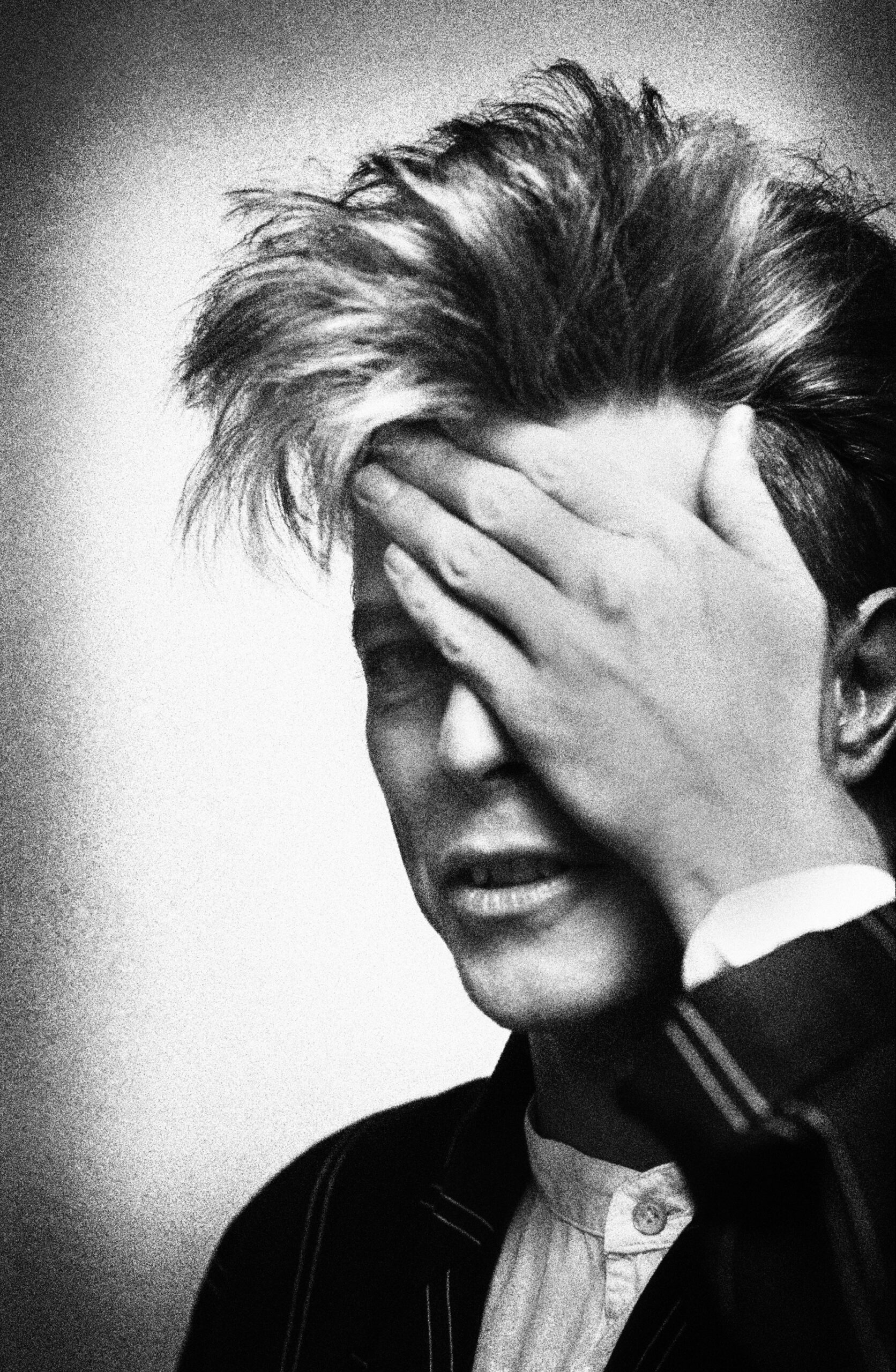
1987 Amsterdam, during filming of a Pepsi advert with Tina Turner.
During the Ullevi stadium show in Gothenburg, David bowed to touch the stage, referencing a move by Steve Strange, who had appeared in Bowie’s “Ashes to Ashes” video. On 20 June, 1987, a decade before Princess Diana’s tragic accident in Paris, I invited my father and youngest brother Declan to David Bowie’s Glass Spider show at Wembley Stadium. I escorted them on a short sojourn into the audience and out to the mixing desk in the centre of the stadium, which afforded the best view over the crowd towards the stage. I wandered back to the dressing rooms alone, blissfully unaware that Princess Diana was on her way. The backstage area was cleared of bystanders as Princess Diana glided into the inner sanctum, where David introduced her to each member of his band. Promoter Harvey Goldsmith had met Diana many times and when I asked whether I could take a picture, he replied, “Why don’t you ask her yourself?” Formality apparently dispensed with, I approached the most famous woman in the world, suggesting that she pose with David. “Do you really think he’d want to?” she asked. To which I replied, “I think he would!”
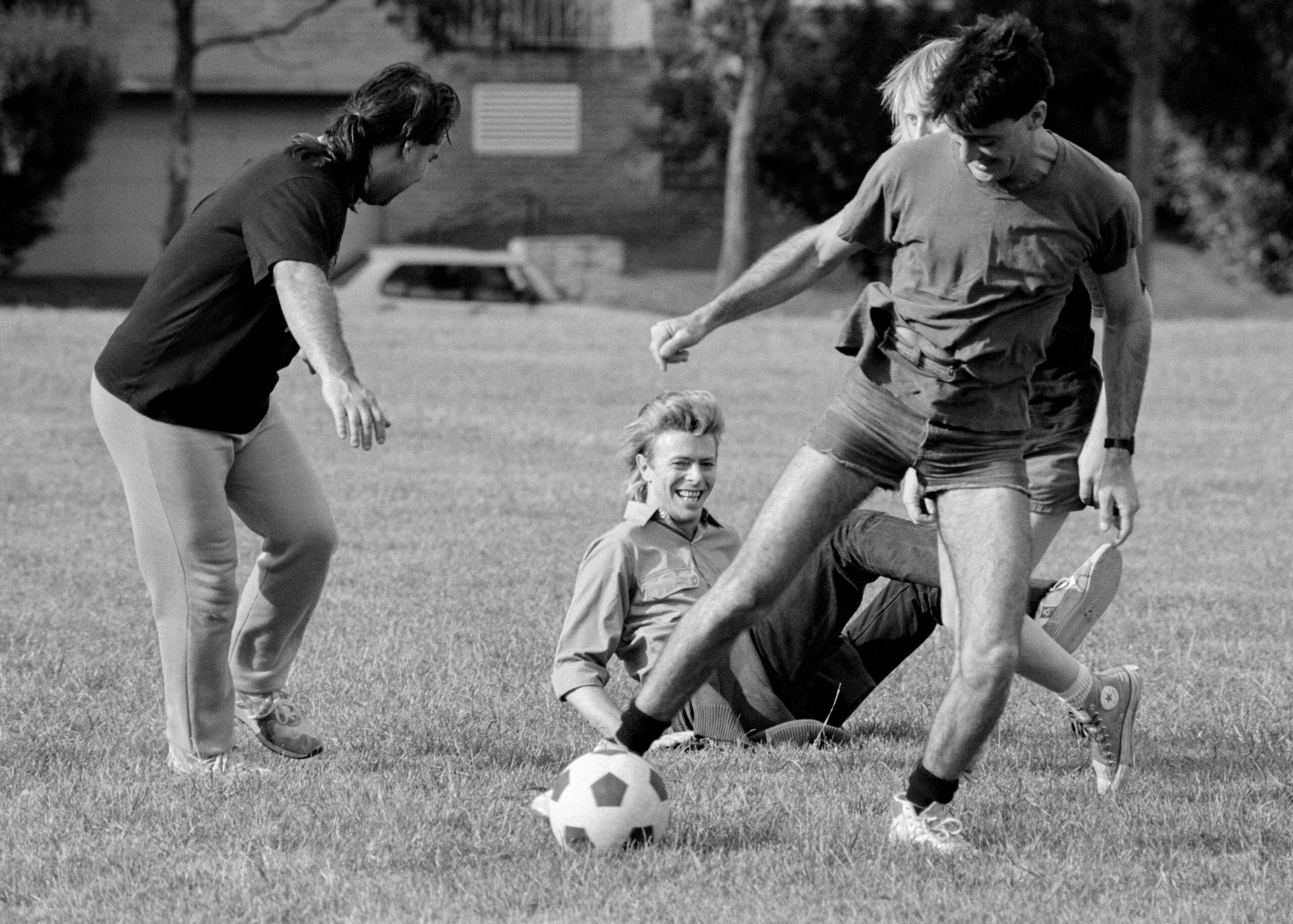
1987, Playing football with musicians and crew members in Melbourne, Australia.
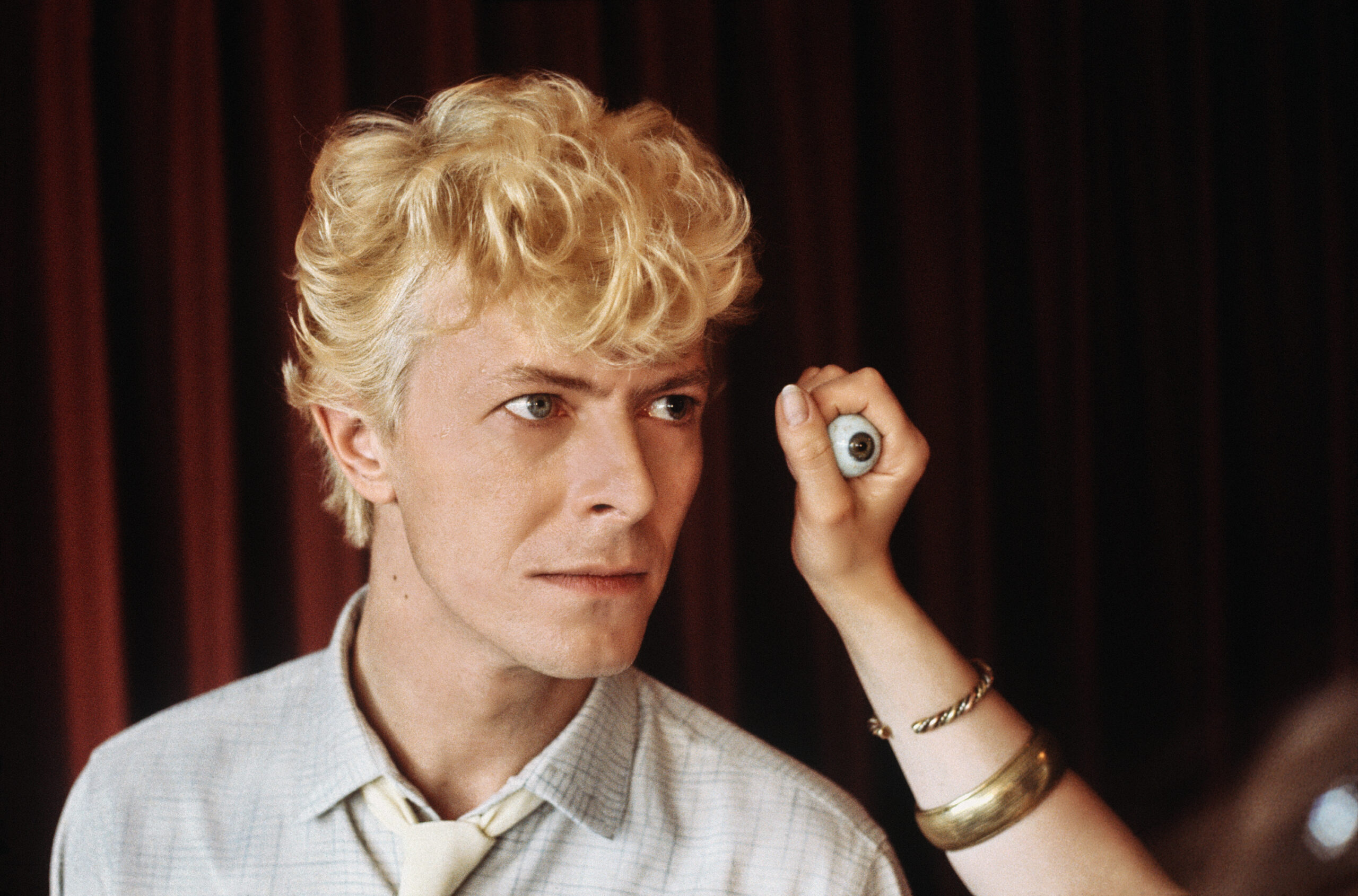
Bowie poses for a designer at Madame Tussauds in London, while she colour-matches his eyes for his waxwork.
In 1990, David hosted a press conference at the Rainbow Theatre in London to announce his Sound+Vision Tour. I attended with a view to capturing an informal portrait prior to his appearance before the press, the resultant photographs portraying David’s naturally dapper “cheeky chappy” persona. The inspiration for my career journey had struck 17 years prior at the Hammersmith Odeon Ziggy Stardust concert, the night before David consigned his creation to history. The retirement concert, broadcast on TV a week earlier, prompted me to enlighten David that “It’s you that inspired me to take up photography.” To which he replied: “I bet you say that to everyone. You’ll probably say it to Bono tomorrow.” David was the quintessential Englishman—modest and incapable of accepting a compliment.
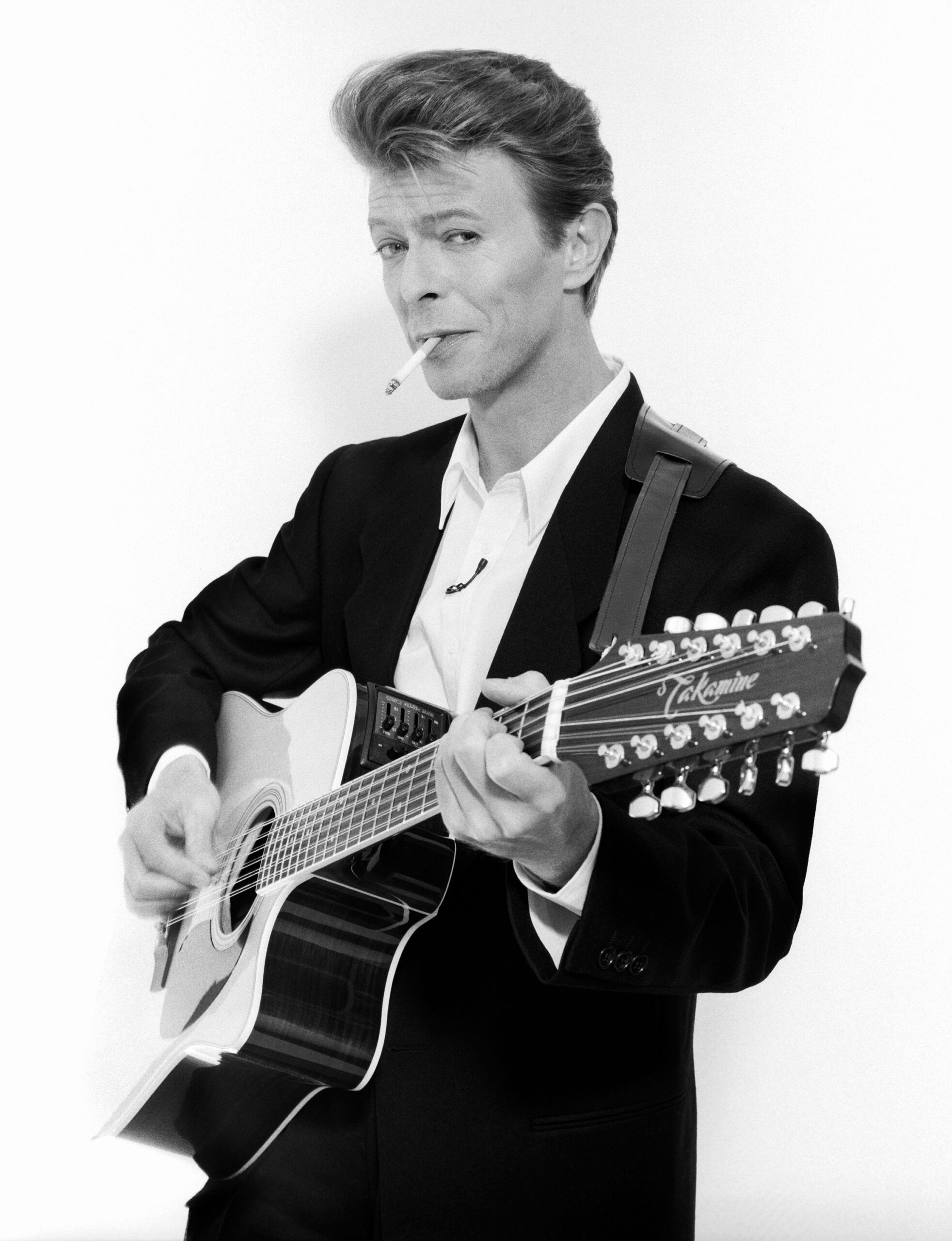
1990 Bowie Rainbow Theatre, Bowie backstage at London’s Rainbow Theatre, before his 1990 press conference announcing the Sound+Vision tour.
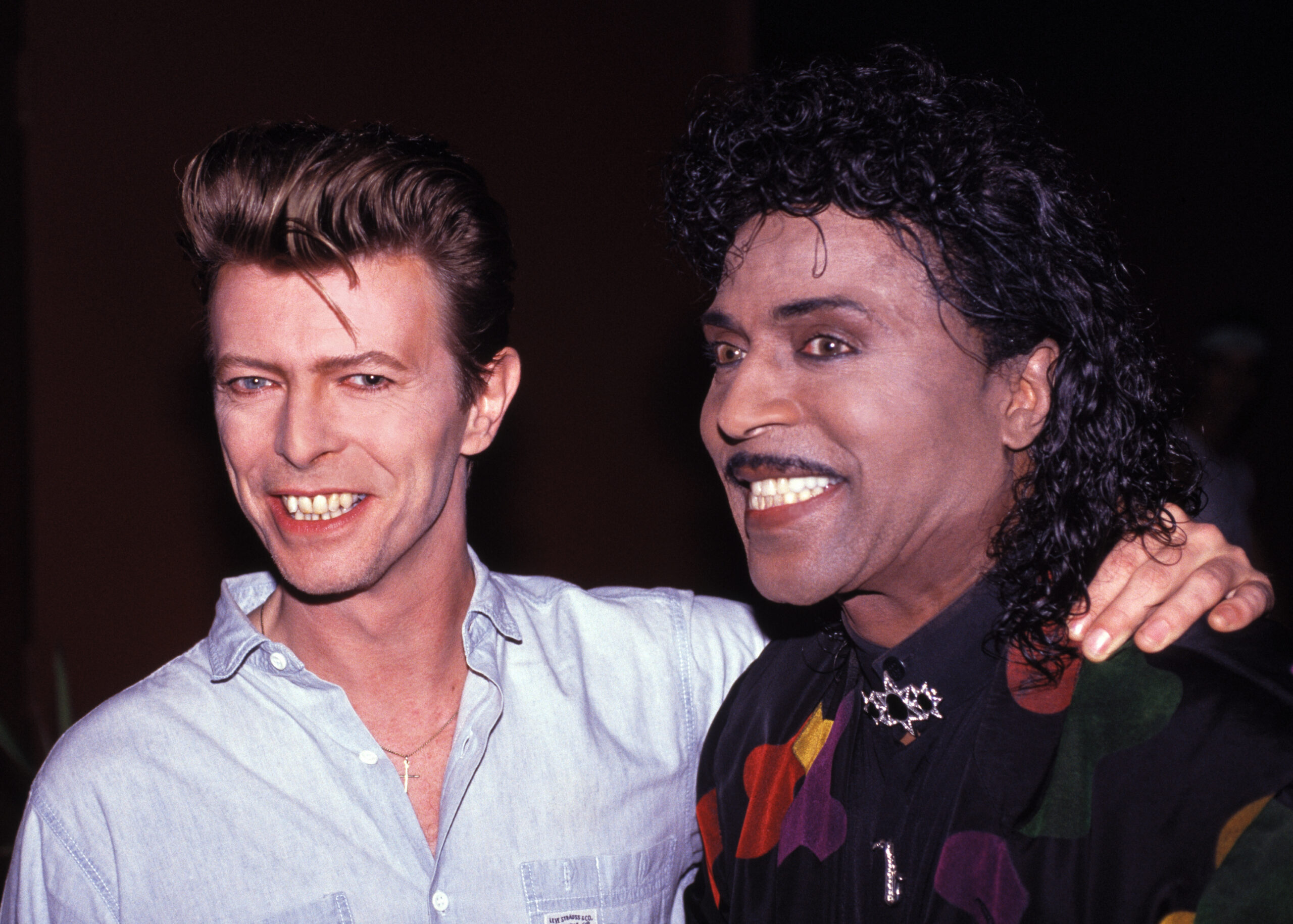
David Bowie and Little Richard, 1990.
I dropped into a few shows on the Sound+Vision Tour, primarily in the USA and Europe, including the Milton Keynes Bowl in August, where temperatures approached 100 degrees Fahrenheit. There were photographs to be taken of course, but it was also an expedition with family and friends. I captured the crowd from a helicopter over the venue, then introduced Mr Jones to my father. His greeting was so very David: “Hello Dad!”
David’s passing left me saddened, a sentiment that troubled me long before that fateful day. I sometimes dreamt of visiting my old chum at his Lafayette Street apartment in Manhattan. One evening I lay on the bed with my nine-year old son Rory as we immersed ourselves in the affecting melodies of Blackstar. “Will I ever get to meet David?” he asked. “I’m sure you will,” I said.
David slipped away in New York City early the following morning of 10 January 2016, 38 years after I’d first met him as he bounced across Church Road in Barnes. In tribute, along with a photograph that I’d taken of the two old friends together in London, Mick Jagger tweeted: “We had so many good times together. He was my friend, I will never forget him.”
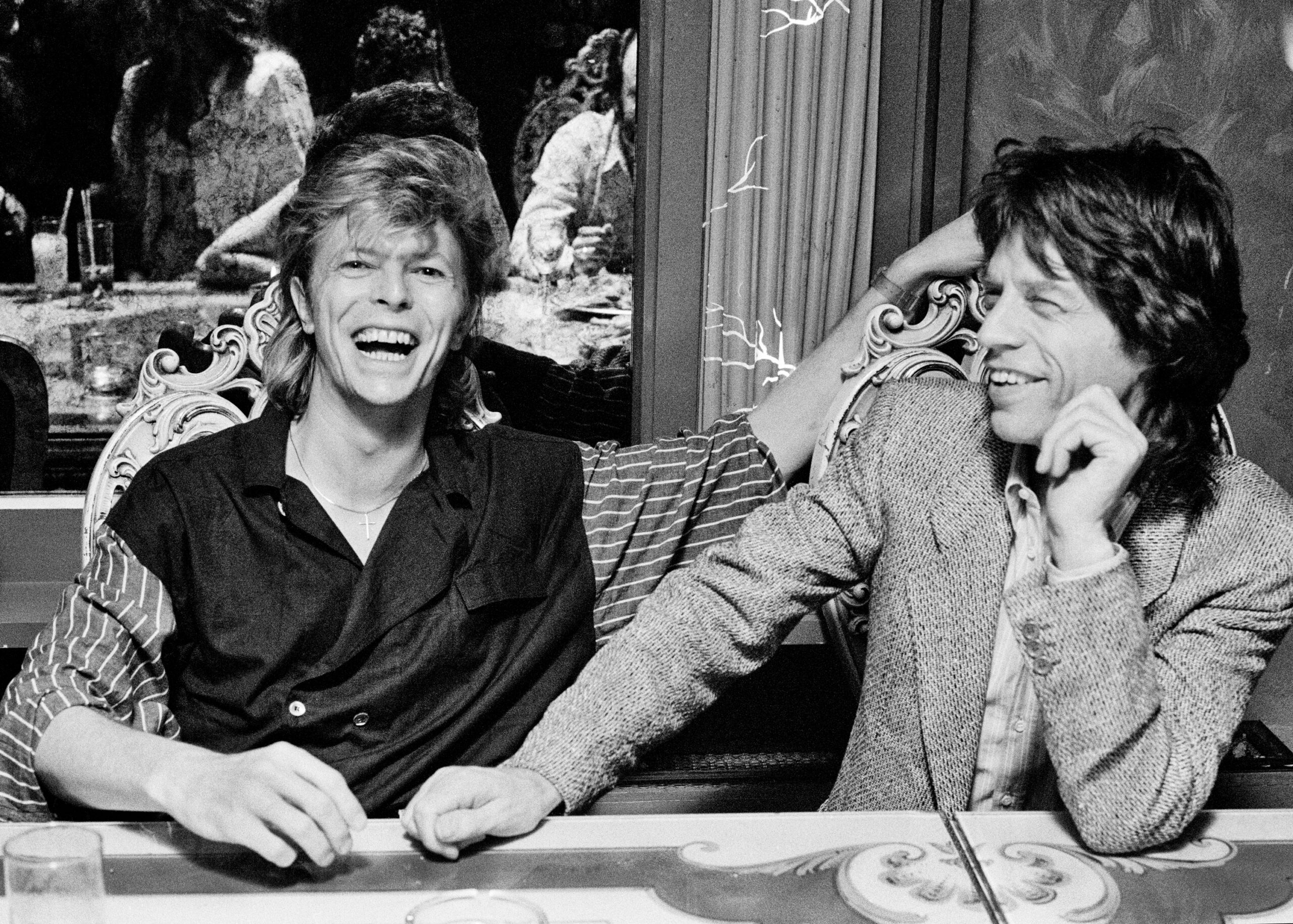
1987 Bowie & Jagger Soho, David Bowie and Mick Jagger at ‘Bill Stickers’ Club, 1987.
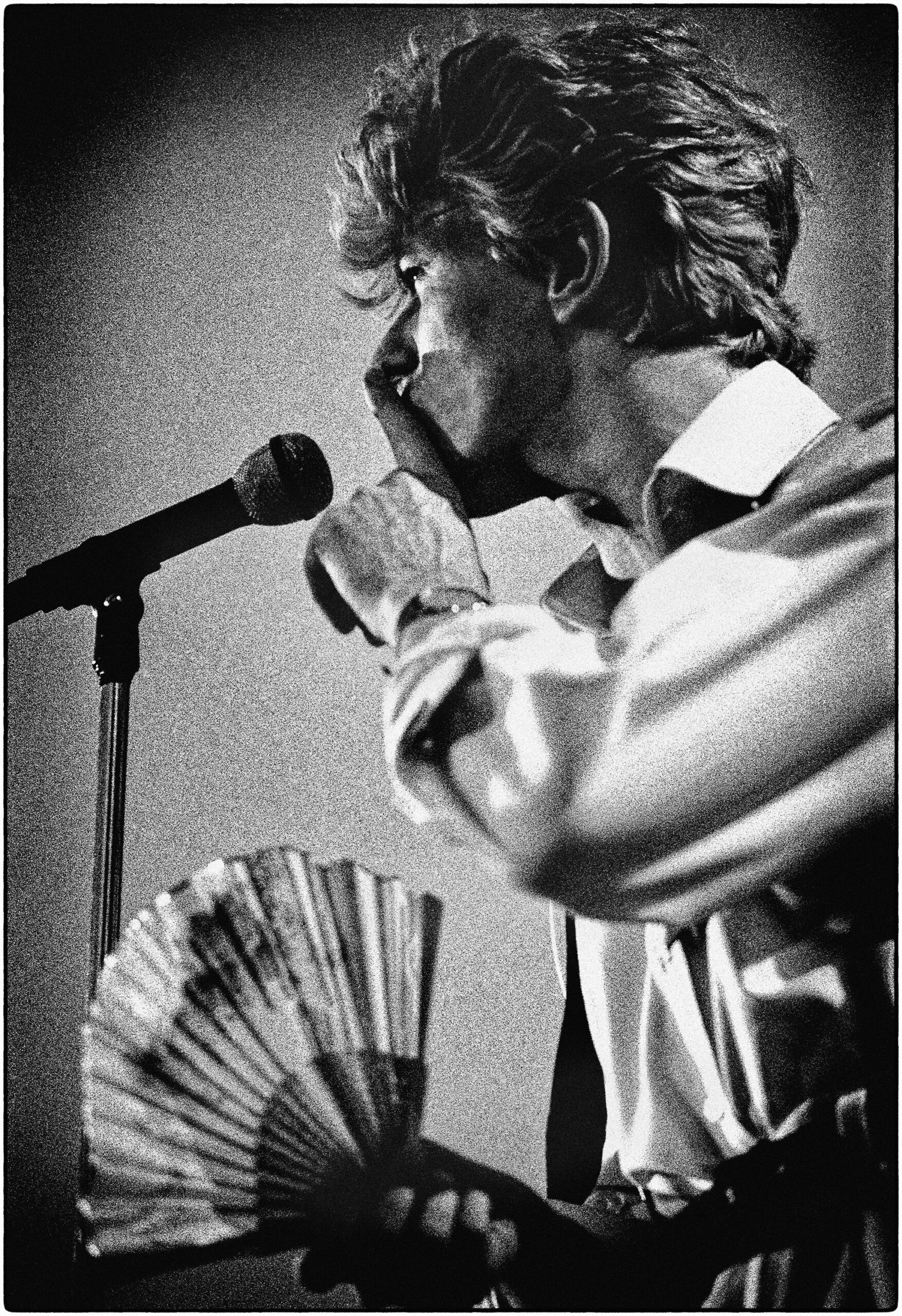
1983 Performing China Girl on the Serious Moonlight tour.

